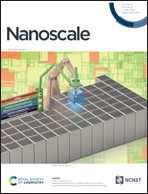Selection of an aggregation-caused quenching-based fluorescent tracer for imaging studies in nano drug delivery systems†
Abstract
In order to develop and optimize nano drug delivery systems (NDDSs), it is crucial to understand their in vivo fate. We previously found that P2 (Aza-BODIPY) and P4 (BODIPY) as aggregation-caused quenching (ACQ) probes could be used to unravel the biofate of various nanoparticles owing to their water-sensitive emission. However, previous studies also found that quenched ACQ probe aggregates showed repartition into hydrophobic physiologically relevant constituents, resulting in fluorescence re-illumination. In this paper, we screened various types of fluorophores for ACQ and their re-illumination performance and focused on Aza-BODIPY dyes. BODIPY and Aza-BODIPY dyes were identified to be advantageous over other fluorophores. Some BODIPY and Aza-BODIPY dyes were selected as potential probes with improved performance against re-illumination. The best performing probes were Aza-C7 and Aza-C8. Aza-C7-loaded PMs were found to have decreased fluorescence re-illumination properties over P2 and DiR.

- This article is part of the themed collection: Celebrating 25 years of the Key Laboratory for Special Functional Materials at Henan University


 Please wait while we load your content...
Please wait while we load your content...